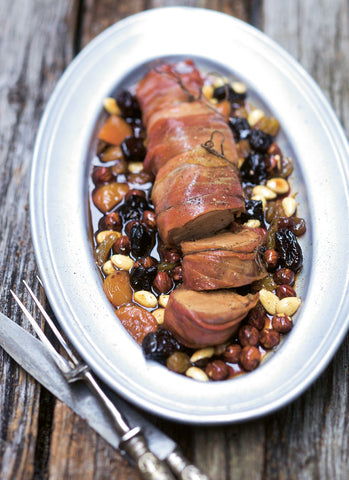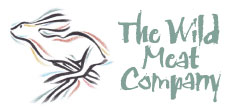Ways with Wild Boar
by Robert Gooch May 30 2018
When people try genuine wild boar, they’re often surprised how different it is to pork. If you’ve yet to taste the unique and moreish flavour of wild boar or you’d like advice on the best cooking methods, here’s what you need to know.

What does wild boar taste like?
Unlike farmed pork, wild boar has a rich flavour that has been described as a cross between free-range pork and venison. The wild boar’s natural diet adds an intensity of flavour to the meat, and its active life creates leaner meat with a firmer texture. Much darker than pork, our wild boar bears much more resemblance to steak. Unsurprisingly, the meat is also more nutritious than pork while being lower in calories, fat, saturated fat and cholesterol.
Why do we import our wild boar?
Most of the wild boar meat sold in the UK is in fact feral pig rather true wild boar. Originating from escaped domestic pigs, meat from these ‘wild boar’ is lighter in colour than genuine wild boar, with less flavour and nutritional value.
We prefer European wild boar to the wild boar currently being farmed in the UK, as these ‘wild boars’ are often bred with rare breed pigs to create hybrids that are easier to handle. In our opinion, the flavour of the meat from these animals does not come close to that from genuine wild boar.
Wild boar can be found in this country – but they are few and far between. To help protect the UK’s small populations, we source our wild boar from Europe, where they are hunted in their natural habitat. These free-roaming foraging animals live on a diet of bulbs, acorns, chestnuts, mushrooms and berries as well as insects, worms and small mammals, and raided cultivated crops. This varied diet gives the meat its unbeatable deep sweet and nutty flavour.
What cuts of wild boar are available?
We supply a wide range of wild boar cuts, including roasting joints, haunch and loin steaks, striploins and diced leg and shoulder. We also sell wild boar bacon, sausage meat, sausages and burgers as well as wild boar salami and chorizo.
These cuts can all be used in place of their pork equivalent in recipes, but – as with all game meats – take care to ensure the lean meat is well basted and doesn’t become dry.
Cooking wild boar
The cooking rules that apply to venison and other game meats also apply to wild boar. Long, slow cooking will give you the best results for roasting joints and diced meat, and marinating in an oil-based marinade prior to cooking will help to produce tasty, tender meat.
For a moist joint of wild boar, marinate for a couple of hours or overnight then sear the meat in a pan of hot olive oil before wrapping in foil and transferring to the oven. Roast in the centre of an oven set at 200°C (180°C fan/400°F/gas mark 6) for 25 minutes before reducing the temperature to 180°C (160°C/350°F/gas mark 4). Allow 40 minutes per kilogram plus 40 minutes. Rest the meat for at least 10 minutes before serving.
Our diced wild boar meat ideal is incredible in slow-cooked stews or ragouts served over pasta. For optimum results, cook stews in a low oven (130°C /250°F/gas mark 1) for around 2½ to 3 hours.
Steaks, on the other hand, are perfect pan-fried for a quick and easy treat. Brush steaks with oil or butter and season well before adding to a heated frying or griddle pan over a medium heat. For medium-rare steaks, allow 3—4 minutes on each side.
Sausages, burgers and bacon are also speedy and simple to cook. Simply grill, barbecue, fry or bake until cooked through.
Ideal flavours for wild boar
Wild boar is fantastic teamed with earthy flavours such as mushrooms, pumpkin or beetroot as well as cabbage or slaws, peppery stews or fruity sauces.
Fruits: apple, plum, juniper berries, redcurrant, cranberry
Herbs: fennel, oregano, sage, rosemary, thyme
Spices: pepper, cumin, nutmeg, chilli, paprika, cloves
Alcohol: red wine, port, sherry, cider
Our favourite recipes
- Wild boar goulash
- Wild boar with an Asian twist
- Sausage & bean casserole (with wild boar sausages)
- Michel Roux Jr’s wild boar ragù with fresh pasta
- Pot-roast wild boar and pumpkin (from Delicious magazine)
- The Hairy Bikers’ wild boar meatballs
- Maria Elia’s wild boar steaks

